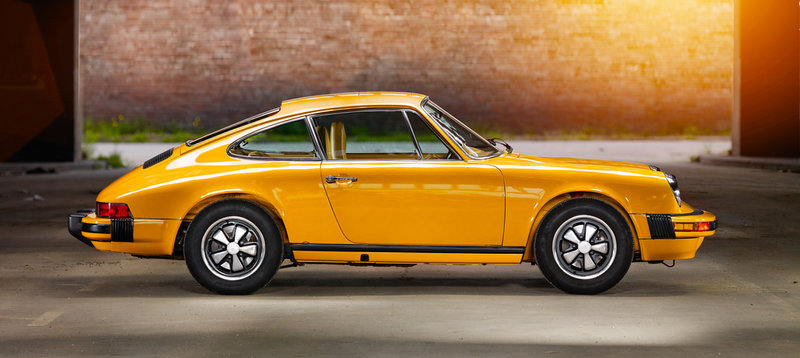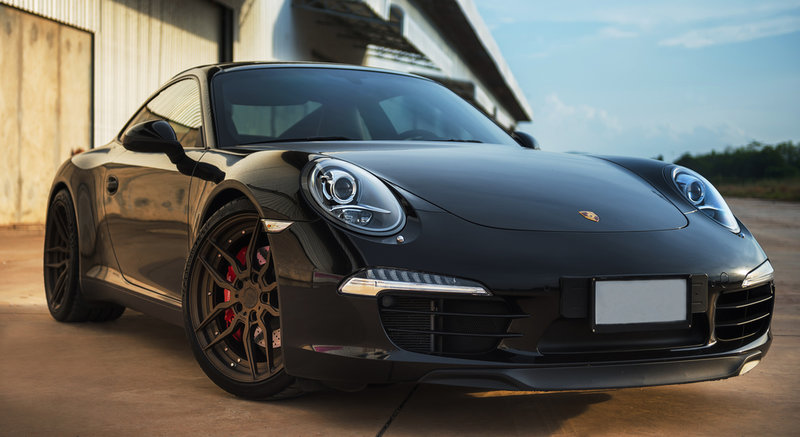The Porsche 911 first appeared in 1963. Over the years, it has turned into a legend. Drivers want the new models just as much as the classic versions, showing this sporty auto’s longevity.
When the Porsche 911 first arrived, it was based on the Porsche 356, keeping the overall design of the fastback in the form of a four-seater. However, it did opt for a flat-6 that was air-cooled and generated 130 brake horsepower. Although the original goal was to continue the 356’s features, the 911 got a new chassis featuring MacPherson struts, torsion bar springs, and semi-trailing arms, as well. Ferdinand Alexander “Butzi” Porsche handled the styling.

source: ShutterStock
1969
In 1969, the Porsche 911 grew in size, with the wheelbase reaching 89.4 inches instead of its previous 87.1. In 1974, this Porsche grew 4.5 inches longer thanks to larger bumpers. Even so, it was a compact car. Under the hood, 1969 saw mechanical fuel injection, which was standard in 1974 then swapped in 1984 for Bosch digital engine management.
1989
Porsche introduced a heavily revised version of the 911 in 1989. It got a retractable rear wing, improved aerodynamics, power steering, ABS, an updated engine with 247 horsepower and 3,600 cc, and a new suspension that featured coil springs as opposed to the previous torsion bars. The silhouette was more minimalistic, while the interior became more modern.
The first version to arrive this year was the Porsche 911 Carrera 4, which featured all-wheel drive to take care of the occasional tail-out antics drivers complained about. A rear-wheel-drive Carrera 2 came in 1990, offering an available 4-speed Tiptronic automatic. 1991 saw the addition of a Turbo with a 315-horsepower engine, which a 355-horsepower 3.6-liter replaced in 1993.
1994
Yet another generation arrived in 1994, with the Porsche 911 getting a significant facelift. It also received extra power and the option of either a 6-speed Tiptronic or manual. The big news was the new multilink rear suspension, which ended most of the complaints concerning the rear-wheel-drive model.
The Carrera 4 version got a lighter and simplified AWD system. When the Turbo joined the generation in 1995, it had 400 horsepower. This generation was also when the first 911 GT2 arrived, with just 57 of these homologation specials that let the Porsche 911 compete in GT2-class races. The first version of the GT2 had a 3.6-liter twin-turbo with 430 horsepower, which increased to 450 horsepower in 1998. It could reach 60 mph in under 4 seconds.

source: ShutterStock
1997
The first water-cooled 911 welcomed in a new generation in 1997. While it kept the rear-engine 2+2 format, it was also closely related to the Boxster with its mid-engine, including the use of a derivative engine with 296 horsepower. This was actually the first time the 911 had a complete redesign since the interior and body were also almost completely new. There were a whopping 16 variants in this generation. Of them, the AWD Turbo S, RWD GT2, GT3, and GT3RS delivered the most thrills.
Recent Generations

source: ShutterStock
In more recent years, Porsche gave the 911 a makeover for 2005 with traditional round headlights, an improved interior, and the ability to reach 60 mph in under 3 seconds. 2012 saw yet another generation, this time with a longer wheelbase, sleeker profile, and the option of twin-turbo.
